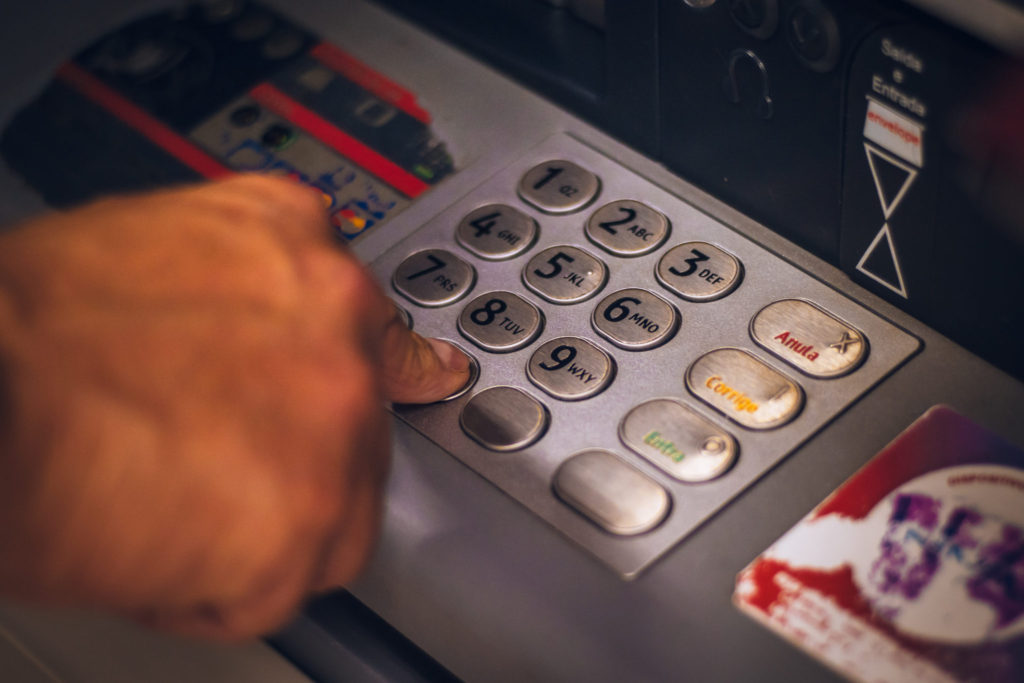Before you travel to Mexico, you’ll probably be wondering how to get pesos in Mexico. What money is best to take to Mexico? Do you need to carry cash? Should you exchange money before you travel to Mexico? Or is there a way to get pesos once there without paying huge fees? Once you are there, can you use your debit and credit cards?
Below are our tips to get the lowest ATM fees, how to use your debit card, when to use a credit card, the cheapest way to get pesos, how to send money to Mexico, and where to find the best exchange rates so that you never get overcharged or scammed again!
About The Mexican Peso
Mexico’s national currency is the Peso. The symbol for the Mexican Peso is $, MXN, or MN (which stands for Moneda Nacional). Mexican bills are printed in denominations of 20, 50, 100, 200, 500, and 1000 pesos.
The value of the Mexican Peso fluctuates every day and has varied over the years. In the year 2000, the exchange rate for $1 USD was ~$10 MXN, in 2010 it was ~$13 MXN, and in 2020 hovered around $20 MXN.

How to Get Pesos in Mexico
Below we’ll cover how to get money in Mexico by finding the best low-fee ATM exchange rates,how to avoid atm fees, how to use your debit card in Mexico, & using currency exchanges only when needed. Make sure to not miss out on our ATM PRO TIP below to save hundreds of dollars when getting pesos in Mexico!
ATM Rates & Fees
The best way to get pesos in Mexico for your trip is to use your debit card at an ATM. We recommend exchanging enough pesos from your home country before your trip to make it through your first day. Afterward, simply get cash from a local ATM to get the best exchange rate possible.
There are usually a TON of different ATMs right as you exit customs at international airports, which is why it really isn’t necessary to exchange money before you travel to Mexico. The prompts are in English and Spanish so they are easy to follow. Just remember to tell your bank back home that you’ll be traveling to Mexico so that they don’t try to block your card when you try to pull out pesos.
I do not suggest using any random ATM you find on the street, as you’ll probably end up paying high service fees to pull out cash. The best & lowest fee ATMs to withdraw pesos in Mexico are from well-known national banks such as:
- BBVA Bancomer
- Santander
- Scotiabank (partnered with Bank of America)
- Intercam
- Banorte
- Inbursa
- CIBanco
- Banco del Bajío
Some banks have been reported to have corrupt business histories in Mexico, such as HSBC or Citi Banamex (owned by US Citigroup):
HSBC provided money-laundering services of more than $881 million to various drug cartels including Mexico’s Sinaloa cartel and Colombia’s Norte del Valle cartel, which resulted in the heaviest fines ever imposed on a financial institution: $1.9 billion USD.
– Investopedia
When using a debit card, we have seen the lowest ATM fees in Mexico (between $25-30 pesos) at BBVA, Santander, Scotiabank, and Banorte. Also, be aware that your home bank may charge you a Foreign Transaction Fee (often up to $5 USD). Double-check with your local bank to see if they have any partnership with a Mexican bank to avoid these extra fees.
For example, Bank of America has a partnership with Scotiabank, so if you use their ATM you would avoid that ATM usage fee for each cash withdrawal. If you travel abroad often, you may want to open a Charles Schwab account. They reimburse 100% of ATM fees charged by ATM operators AND they do not charge a foreign transaction fee when using their debit card abroad, making it the cheapest way to get pesos.
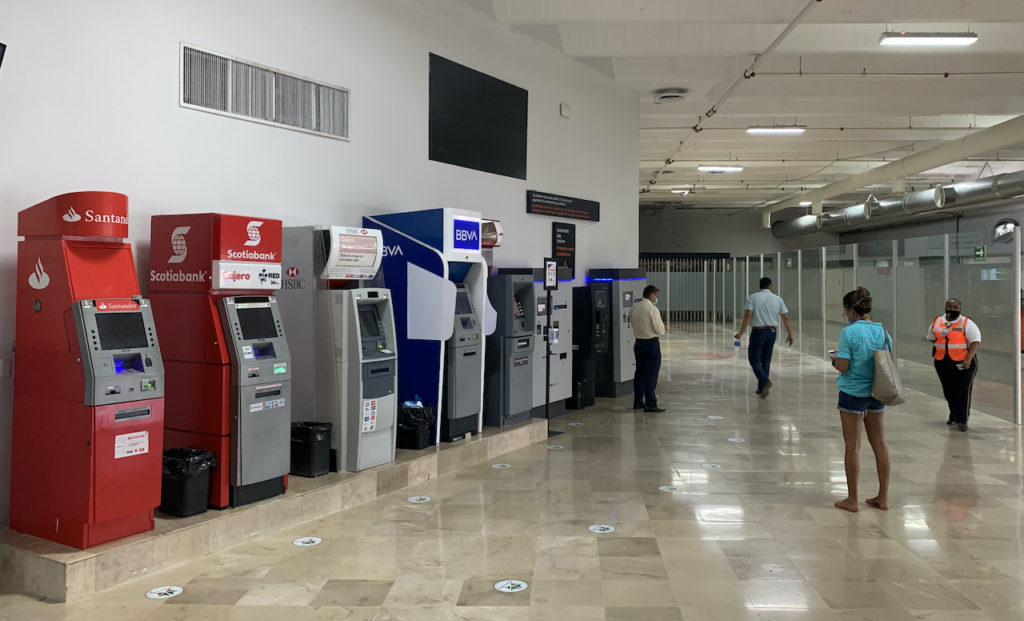
PRO TIP: Hit Decline!
When the ATM asks you if you would like to accept their exchange rate, click DECLINE!!!!!!!!!! I cannot emphasize this enough. You should always decline their conversion offer and process the transaction normally, but many people don’t know that and just hit accept (see image below).
The bank is trying to get you to accept their ATM exchange rate, which is much worse than the rate your actual bank will give you. After you press DECLINE, it will complete the transaction at the current market rate plus a small ATM fee.
Here is the perfect example: last time I used an ATM to get cash, I wanted to pull out $8000 pesos. The bank wanted to give me an ATM exchange rate of 18.83 MXN = 1 USD, but I hit ‘DECLINE’ and the machine proceeded to give me my $8000 MXN in cash without a problem. I later checked my bank statement to see the exchange rate my bank had given me, and it ended up being $21.09 MXN = 1 USD. Even though that may seem like a small difference, it would have cost me an additional $45 USD if I had clicked ‘ACCEPT’!
It’s a perfectly legal scam that goes by the name of Dynamic Currency Conversion, or DCC. You would effectively be letting the ATM make up an exchange rate for you. The only thing more likely to screw you over than your own bank is a foreign bank.
“The problem is that the exchange rate is virtually guaranteed to be terrible, and there may be an additional fee for the service. Furthermore, those costs may not be disclosed to you up front.”
Fortunately, this is almost always avoidable, and simply understanding how DCC works is the most important step towards not getting scammed at the next ATM. I have literally saved hundreds of dollars by using this “trick” and I just wish more people knew about it by learning how to get pesos in Mexico the right way. This is just another example of why banks are the greatest thieves in history.

Credit Card
This is my personal favorite way to pay for things in Mexico since it will give you the best exchange rate possible and I get to earn credit card points, but make sure your bank doesn’t charge foreign transaction fees. The problem with this payment method is that not all businesses in Mexico accept credit cards, so always ask first.
When you use a credit card machine in Mexico, it will probably print out a receipt and the cardholder must physically sign the slip to complete the transaction. They are also beginning to use the chip & PIN payment method more and more.
Many restaurants, hotels, and stores accept credit cards, but you should definitely carry some cash. I highly recommend using an ATM over the Currency Exchanges… but make sure to read my ‘Pro Tip‘ above. It can save you a ton of money when searching for how to get pesos in Mexico!
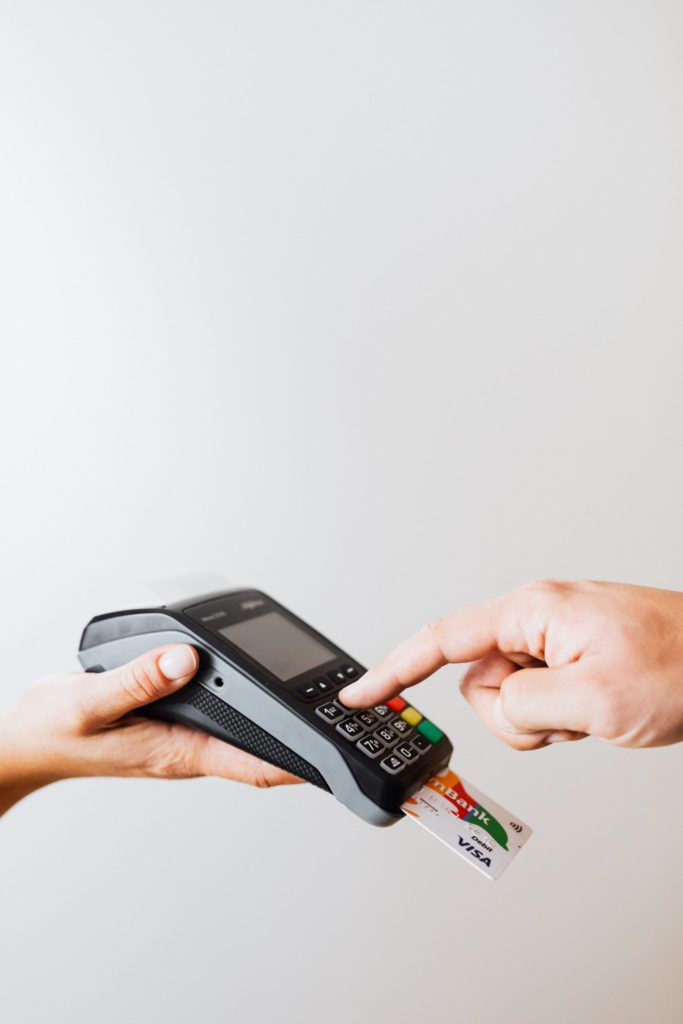
Currency Exchanges
If you are searching for how to get pesos in Mexico, currency exchanges at the airport or downtown will always offer you a worse exchange rate than your bank. That’s how they make money! For this reason, I only suggest using this option when you have some leftover pesos before your return flight at the airport.
If you absolutely need to, the best way to exchange money in Mexico is to look for the words “Casa de Cambio” or search on Google Maps for a nearby “Currency Exchange Service”. We would suggest calling ahead to ask what the current exchange rate is. Mexico City’s airport is one of the best places to exchange your foreign banknotes as the exchange houses there offer very competitive and attractive exchange rates due to high competition.

Best Way to Send Money to Mexico
The cheapest way to send money to Mexico depends on the amount you are sending and your payment method:
Sending less than $9000 USD to MXN
We use Wise (formerly Transferwise) whenever their total fees add up to less than $75 USD. At the time of writing this article, that was around the $9000 USD mark. Wise offers great exchange rates to send money to Mexico since they are independently provided by Reuters, guaranteeing fair and low-cost money transfers. Based on our past experience with them, the recipient’s Mexican bank account usually gets the money transfer within 2 hours (direct debit) or 3 days (wire transfer option). It is definitely one of the most efficient and cheap ways to send money to Mexico.
The main disadvantage of Wise is that you cannot send MXN to USD. They only allow converting USD to MXN, which isn’t surprising since the amount of Remesas (Remittances) that Mexico gets is huge!
Sending more than $9000 USD to MXN
If you are sending amounts higher than $9000 USD, the cheapest way to send money may be with a wire transfer directly from your bank. Make sure to ask your bank about all the related fees. Also ask if the recipient’s bank charges any fees to receive the amount in USD and how they set the exchange rate.
When making the wire transfer, select “SEND IN USD” or choose “I do not know the currency of the receiving account”. Banks want you to accept their terrible exchange rates. For example, for a $55,000 USD wire transfer, the bank wanted me to accept their set exchange rate, which (after crunching the numbers) would have cost me over $1500 for sending the money. Instead, simply send the amount in USD, pay the one-time fee (in my case it was $45 USD), and the funds will be converted to local currency at an exchange rate that’s set by the receiving bank (make sure to ask how this bank sets their exchange rate, as it varies a lot from bank to bank). See example below:
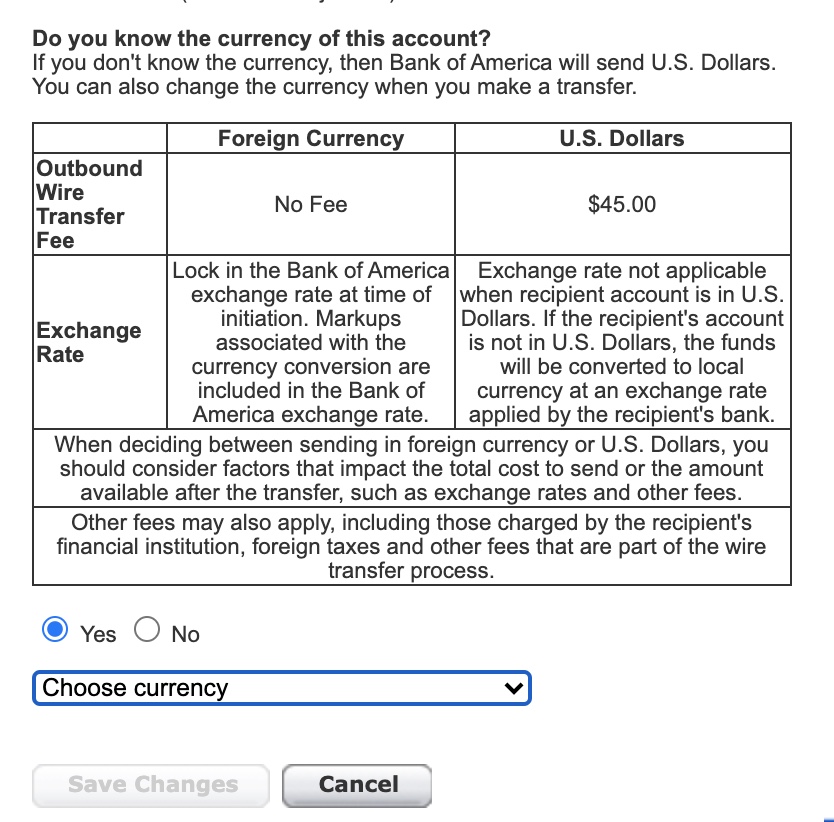
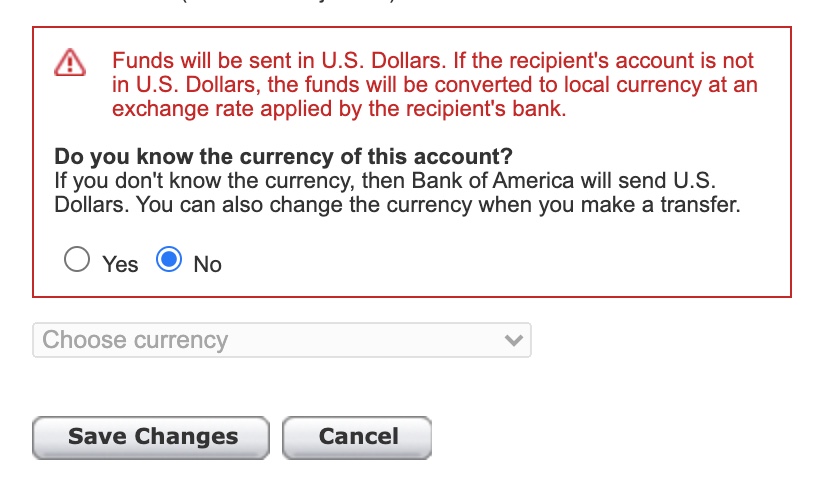
Other Money Tips
- Don’t pay with dollars at stores or restaurants since they’ll probably be giving you a bad exchange rate.
- To avoid bank card cloning or skimming, never allow your cards out of your sight. If your card has a “chip & pin” method, ask your waiter to bring the payment terminal to your table and cover your hand as you enter your PIN. If the terminal is not portable take your card to the cashier to pay. This is very normal.
- Just to be safe, don’t carry around large amounts of cash. Leave excess money back at your place.
- When pulling out cash at an ATM, be mindful of anything that may look suspicious near the vicinity of the cash machine. If anything looks fishy, simply find another ATM. Use common sense, just as you would back home.
- You may see armed guards standing outside banks or at ATMs when they are being refilled. Don’t be alarmed, as this is quite normal as well.
FAQ
In Mexico, an ATM is called a ‘cajero‘. Most cities and towns in Mexico have an abundance of ATMs (cash machines), where you can withdraw Mexican pesos directly from your credit card or debit card.
The best currency to take to Mexico is a mix of pesos and US dollars. If you can’t get pesos before your trip, you’ll be fine. Simply find an ATM as soon as you arrive to the country and pull out some cash. Try to use pesos as much as possible while visiting Mexico, as you will probably be overcharged if you try to pay with USD.
The best way to get pesos in Mexico is to use your debit card at an ATM. I do not suggest using any random ATM you find on the street, as you’ll probably end up paying high service fees to pull out cash. The best & lowest fee ATMs to withdraw pesos in Mexico are from well-known national banks.

